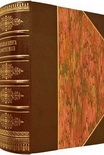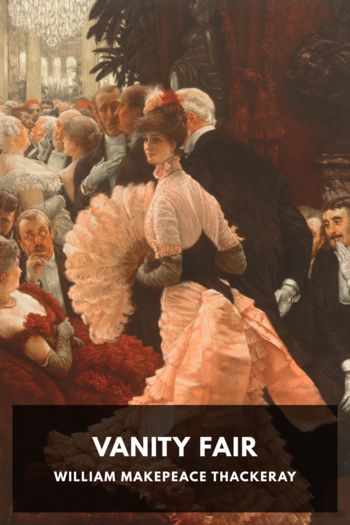Just Jackie Edward Klein (top 10 novels of all time .TXT) 📖

- Author: Edward Klein
Book online «Just Jackie Edward Klein (top 10 novels of all time .TXT) 📖». Author Edward Klein
Willi Frischauer, Ari’s biographer, portrayed Jackie as a woman who did not know when to leave well enough alone. She found her husband’s taste to be vulgar, and tried to get rid of the whale-scrotum upholstery and the Vertez murals on the Christina. She was dissatisfied with her surroundings, so she kept her homes in a constant state of upheaval.
“The syndrome seemed almost pathological,” Frischauer said. “Find a place, rent it, buy it, decorate it, then leave it. Find another place, et cetera.”
But it was Costa Gratsos who inflicted the most damage on Jackie’s reputation.
“Gratsos had the bad habit of saying strange things about people just for the fun of it,” Stelio Papadimitriou said. “It was a way of getting people to pay him attention and respect.”
In his talks with reporters, Gratsos sought to create an image of Jackie as a selfish ingrate.
“[Ari] was very generous with Jackie’s children,” Gratsos said. “He bought John-John a speedboat and Caroline a sailboat for use at Skorpios. He bought John-John a jukebox and a mini jeep to ride around the island. He gave them Shetland pomes.
“But beyond presents, he tried to give himself, to be with them,” Gratsos continued. “He attended their school plays in New York, and went out to Jackie’s place in New Jersey to watch them ride. And the truth is, Ari hated it there. He didn’t care for horses at all. But he’d go out anyway, when he was in New York, and most of the time he’d just stand around. He was always complaining that the mud and the horse dung ruined his shoes and pants.
“Once when he complained, Jackie told him off. ‘You’re so badly dressed, what difference does it make?’ she said.”
Costa Gratsos provided the river of sludge that spilled from the pages of the first book-length examination of the Onassis marriage. This book, which set the tone for dozens of others that were to come, was written by Fred Sparks, a Pulitzer Prize-winner who seemed to have forgotten everything he had ever learned about responsible journalism. In The $20 Million Honeymoon: Jackie and Ari’s First Year, Sparks alleged that Ari managed to spend a mind-boggling $20 million during the first year of marriage, the great bulk of it on things for Jackie.
Since most people assumed that Jackie had married the aging, gnomelike shipping tycoon for his money, they were ready to accept almost anything that Sparks said.
“Probably Jackie is now spending more on herself than any other woman in the world,” Sparks wrote, “and that includes such extravagant ladies as the wife of the Shah of Persia, Mrs. William Paley, and Elizabeth Taylor, whose husband, Richard Burton, recently said: ‘Liz can spend $1,000 a minute, and I’m not joking.’ ”
But Sparks’s $20 million figure (the equivalent in today’s money of $120 million a year) was grossly misleading. The fact was that Ari’s basic expenses—for his offices around the world, his far-flung residences, his yacht, his several hundred employees, and his own lavish lifestyle—did not change substantially after he married Jackie. At most, Jackie’s upkeep may have added a million or two to his annual budget—at a time when financial publications estimated that his yearly income from shipping alone was $50 million.
Jackie herself did not help matters when she joked about a pair of fabulously expensive earrings that Ari had given her for her fortieth birthday. The earrings represented the earth and the moon joined by a miniature Apollo 11 spaceship.
“Ari was actually quite apologetic about them,” she told Greek actress Katina Paxinou. “He felt they were such trifles. But he promised me that, if I’m good, next year he’ll give me the moon itself.”
Her self-mocking humor was lost on most people. Even The New York Times seemed to prefer the pathological Jackie to the real one. In a review of Sparks’s book, the Times portrayed Jackie as an “emotionally malnourished” woman whose slow-motion nervous breakdown during perimenopause took the form of shopping.
Jackie’s reputation as a compulsive shopper was being chipped into stone.
AN EVEN DOZEN
John Fairchild, the editor of Women’s Wear Daily, and the reigning arbiter of style and fashion, dubbed Onassis “Daddy O” in recognition of his sugar-daddy status. Jackie became known forever more as “Jackie O,” a nickname that, among other things, was an allusion to the sex-slave heroine of the sadomasochistic French novel The Story of O. But even as the world’s imagination was being inflamed by tales of Jackie’s orgiastic shopping, Ari happily continued to indulge his wife’s fancy.
One day he took her to the exclusive Park Avenue boutique owned by Hélène Arpels, an international fashion plate and the wife of the proprietor of Van Cleef & Arpels. Hélène had known Jackie for more than twenty years, and had been advising her on her wardrobe since before she married John Kennedy.
Hélène was waiting at the door when Jackie arrived with Ari. Her shop was decorated with tasteful Chinese furniture. A voluptuous antique Chinese rug, owned by Hélène’s partner, Andre Azria, was laid on the wall-to-wall blue carpeting. Three Chinese salesgirls, hands clasped demurely at their waists, looked on as Madame Arpels bussed her friends French-style on both cheeks.
“I love your shoes,” Jackie said as she looked around.
Everything in the shop was designed by Hélène herself. Each pair of shoes cost several hundred dollars.
“I’m glad you like them,” Hélène said.
“Do you have something in my size?” Jackie asked. “Preferably low heels.”
“I knew Jackie’s taste very well,” Hélène told the author of this book. “I had gone with her many times in Paris to the House of Givenchy. I helped her choose things. It was I who had lent her the jewels that she had worn in 1961 when she and President Kennedy visited de Gaulle at the Elysee Palace.
“Despite what the newspapers said about Jackie,”





Comments (0)